It was disclosed by the Propaganda Department of the CCP Shanghai International Studies University Committee on June 19, 2023 that the university’s School of Journalism & Communication held the Forum on Forty Years of China’s International Communication Education and its 40th anniversary celebration at the Songjiang Campus on June 10, 2023 — an event underscoring how the CCP is tightening its grip on global media training under the banner of “telling China’s story well.”
The forum featured a renewed “CCP Propaganda Department-University Cooperation Agreement” between the CCP Shanghai Municipal Propaganda Department and SISU, reaffirming the Party’s direct ideological control over journalism education. Both sides pledged to implement Xi Jinping’s “new cultural mission,” explicitly anchoring the curriculum in Marxist media theory and international propaganda strategy. The initiative aims to produce multilingual “international communication professionals” tasked with shaping global narratives favorable to the CCP.
SISU President, SISU’s CCP Party Vice Chair and CCP member Li Yansong (李岩松) described the School as the “core incubator for international communication talent,” promising to deepen coordination with the CCP’s propaganda organs, top journalism schools, and state-owned media enterprises.
Yin Xin(尹欣), Director of the CCP Shanghai External Propaganda Office and the Shanghai Government Information Office, stated that many foreigners still “misunderstand China and Shanghai,” calling on youth to “pick up the microphone” and use new media technologies to “break through internationally” — a euphemism for expanding CCP influence in foreign information ecosystems.
Guo Ke(郭可),Dean, a doctoral supervisor and 2nd Tier Professor at the School of Journalism and Communication of Shanghai International Studies University highlighted the School’s four-decade evolution into a training hub integrating “international vision” with “practice-oriented learning.” He announced a continued focus on developing the “International Communication + N” model — a CCP initiative combining journalism, foreign language study, and political communication training across sectors.
The event also included the signing of a joint education agreement with Fudan University’s School of Journalism, further aligning both institutions’ teaching and research with CCP propaganda goals. Messages of support arrived from senior Party propaganda officials including Zhao Qizheng“赵启正” (former head of the CCP State Council Information Office) and Zhou Shuchun“周树春” (former president of China Daily).
Speakers such as Jiang Heping“江和平”, co-founder of CGTN and ex-head of China Media Group’s North America Bureau, urged students to “innovate and break conventions” in “telling China’s story” — signaling an ongoing shift from traditional journalism toward adaptive, globalized narrative warfare.
The forum closed with sub-panels and exhibitions on “international communication innovation,” highlighting the Party’s broader strategy: to fuse universities, media organs, and foreign outreach into an integrated propaganda infrastructure capable of reshaping global public opinion in favor of the CCP regime.
It was disclosed that on February 27, 2019, the Propaganda Department of CCP Shanghai Municipal Committee and Shanghai International Studies University (SISU) signed a new cooperation agreement to co-build the School of Journalism and Communication. The ceremony took place at the Propaganda Department, with attendance by CCP Shanghai Municipal Committee Deputy Secretary and Propaganda Department Deputy Minister Zhu Yonglei(朱咏雷), SISU Party Committee Deputy Secretary and President Li Yansong, senior leadership from the Propaganda Department’s News, Cadre, Development, and Public Opinion Offices, and the SISU School of Journalism and Communication Party and administrative leadership. The signing was hosted by Sun Weixing, Director of the Department’s Co-Build School Leadership Group Office.
Deputy Minister Zhu Yonglei emphasized that both parties must leverage their respective advantages: the Propaganda Department providing political and organizational support, and SISU contributing talent cultivation, research, and academic expertise. He called for strengthened coordination, efficient joint mechanisms, and personnel exchange programs, including faculty and professional secondments, to foster closer integration between academic training and journalism practice. Zhu outlined three priorities for the co-building effort:
Strengthening Marxist journalism education, ensuring the study and implementation of General Secretary Xi Jinping’s directives on Party news and public opinion work are integrated into classrooms, practice, and thought leadership.
Enhancing practical capabilities, improving the professional skills and operational proficiency of both sides.
Forming cohesive mechanisms, optimizing institutional structures for sustained collaboration.
President Li Yansong expressed gratitude for the Propaganda Department’s support, describing the agreement as a major milestone in SISU’s “Double First-Class” construction and the university’s 70-year academic development. Li detailed four strategic commitments:
Upholding correct political and educational direction, guided by the Marxist view of journalism, to make the School of Journalism and Communication a trusted Party and public institution.
Strengthening internal development, creating career-supportive structures, and building a high-level faculty with global perspectives.
Adapting to the new media landscape to improve training quality and produce a first-class cohort of politically reliable, professionally skilled, and ideologically aligned journalists.
Leveraging SISU’s language-focused advantage to establish an international public opinion think tank that supports Shanghai’s global media and communication needs.
Yang Jiantong, Director of the News Office of the CCP Shanghai Municipal Propaganda Department, reported on progress in deepening co-construction, emphasizing the goal of cultivating high-quality, media-competent journalism graduates with global perspectives and patriotic commitment.
The agreement specifies that over the first three-year co-building period (2019–2021), the Propaganda Department would provide 5 million RMB annually to support SISU’s School of Journalism and Communication. Dean Guo Ke outlined the implementation approach, highlighting alignment with the Ministry of Propaganda’s ideological directives and national journalism talent plans, leveraging SISU’s strengths in global media research and multilingual journalism education, and integrating practical collaborations with Shanghai-based media outlets.
The agreement includes the joint development of:
Core international journalism talent programs,
Internship and practical training bases,
A collaborative international public opinion think tank,
ensuring that SISU graduates are equipped to enhance Shanghai’s international communication capabilities and promote the Party’s narrative in global media ecosystems.
Biographical background of Li Yansong
Li Yansong, born in October 1964, joined the CCP in January 1986 and began working in August 1987. He holds a Ph.D. in International Politics and International Organizations from Peking University, where he later rose to Vice President and concurrently served as Party Secretary of the School of Foreign Languages.
In April 2010, Li was appointed Vice President of Peking University, and in February 2015, he assumed dual roles as Vice President and Party Secretary of the School of Foreign Languages — positions emphasizing his political reliability within the Party’s ideological framework.
Li Yansong’s transfer to SISU on June 7, 2017 signaled a consolidation of CCP ideological control over foreign-language and international communication institutions. His appointment directly aligned with the Party’s strategic goal of transforming universities into instruments of “international discourse power” (国际话语权) — cultivating cadres who can project the CCP’s narratives abroad under the guise of global academic or media engagement.
Background of Yin Xin
Yin Xin (尹欣), a female CCP cadre born in July 1978, currently serves as Deputy Director-General and Deputy Editor-in-Chief of the Shanghai Media Group (SMG) — one of the largest state-controlled broadcasting conglomerates in China. She holds a Master’s degree in Literature and is a long-serving member of the Chinese Communist Party (CCP).
Yin’s career trajectory illustrates the CCP’s model of grooming loyal propaganda personnel through its media apparatus. She began her career in 2004 at Jiefang Daily, the flagship newspaper directly controlled by the CCP Shanghai Municipal Committee, where she advanced through roles as reporter, assistant to the director, deputy director, and director. In April 2014, she additionally served as Chair of the Jiefang Daily Workers’ Union, consolidating her role within both the Party’s propaganda and personnel management systems.
Over time, Yin transitioned into formal Party-state propaganda leadership roles: she became Director of the Feature Section of Jiefang Daily, then Director of the Career Development Division within the CCP Shanghai Municipal Foreign Propaganda Office (also known as the Shanghai Information Office of the Municipal Government). She was later promoted to Deputy Director and then to Director-General of the same office, simultaneously holding the title of Spokesperson for the Shanghai Municipal Government.
In these posts, Yin Xin was responsible for orchestrating both domestic propaganda coordination and international media messaging, aligning Shanghai’s external communications with the CCP’s central narrative objectives — especially in the realms of “telling China’s story well” and shaping foreign public opinion to favor the regime.
Her appointment in June 2024 as Deputy Director-General and Deputy Editor-in-Chief of the Shanghai Media Group represented a seamless continuation of the CCP’s cadre rotation strategy, embedding core Party propagandists into major media conglomerates. SMG operates multiple national and international broadcasting channels, making it a key node in the CCP’s information warfare and external influence operations.
Yin’s rise exemplifies how CCP propaganda officials move interchangeably between Party organs and media institutions, reinforcing the Party’s total control over information dissemination, ideological education, and China’s outward-facing narratives.
Jiefang Daily, originally the official newspaper of the Central Committee of the Chinese Communist Party (CCP), was first launched in Yan’an on May 16, 1941. Publication was suspended on March 27, 1947, following the CCP’s withdrawal from Yan’an. In late April 1949, Zhou Enlai, during a meeting in Beijing with prominent intellectuals including Fan Changjiang and Shi Ximin before their departure to the south, announced the Party Central Committee’s decision to revive the name Jiefang Daily as the official newspaper of the CCP East China Bureau and the Shanghai Municipal Committee.
Guo Ke is the Dean of the School of Journalism and Communication at Shanghai International Studies University (SISU), a second-tier professor, and a doctoral supervisor. He serves as the chief expert of a Shanghai municipal key think tank, a consulting expert for the National Commission of the People’s Republic of China for UNESCO, the Asia-Pacific regional coordinator of the World Journalism Education Council (WJEC), a member of the PRC's Ministry of Education’s Journalism and Communication Teaching Steering Committee (2022–2026), and a vice president of the China Association for International Communication.
Guo’s research focuses on international communication, external communication strategy, global news, and international public opinion analysis. He is co-editor of the English-language academic journal Online Media and Global Communication and has published six books, including Contemporary External Communication, Introduction to International Communication, Comparative Study on Global Youth Media Consumption, and The World Image of Chinese Media and Public Global Perspectives.
He has also edited two academic series — Global Communication and Chinese Discourse (six volumes) and Global Discourse and Media Studies (four volumes) — and established the Global Communication Case Platform. Guo has completed one major national social science project and three general research projects. As of December 2024, he began leading his second national-level major project titled “Research on the Design and Mechanism of the International Communication Effectiveness Evaluation System.”
Zhao Qizheng – Background and Career Overview
Early Life and Education
Zhao Qizheng was born in January 1940 in Beijing. He studied nuclear physics at the University of Science and Technology of China (USTC), a university founded by the Chinese Academy of Sciences in 1958 to meet national strategic needs and focus on frontier science and high technology. Zhao enrolled in USTC’s Department of Modern Physics in 1958 and completed his studies in 1963.
Early Career in Nuclear and Aerospace Industries
From 1963 to 1974, Zhao worked as a technician at the Second Research and Design Institute of the Ministry of Nuclear Industry. Due to the classified nature of his work, his early career was largely behind the scenes, but he earned recognition as an outstanding nuclear industry expert.
From 1975 to 1984, Zhao held positions in Shanghai’s aerospace sector, including Deputy Director of the Workshop and Deputy Section Chief of the Design Department at the Shanghai Radio Equipment Factory under the Ministry of Aerospace, later serving as the factory’s Deputy Director.
Transition to Political Roles in Shanghai
Zhao joined the Chinese Communist Party (CCP) in May 1979. He transitioned into political and administrative roles in Shanghai from 1984 onwards:
1984: Deputy Secretary of the Shanghai Municipal Industrial Work Committee Party Committee.
1984–1986: Deputy Minister of the CCP Shanghai Municipal Organization Department.
1986–1991: Member of the CCP Shanghai Municipal Committee Standing Committee and Minister of the Organization Department.
1991: CCP Shanghai Municipal Committee Standing Committee member and Vice Mayor.
1992: Concurrently served as Party Secretary and Director of the Preparatory Committee for the Pudong New Area; later elected to the 6th CCP Shanghai Municipal Committee Standing Committee.
1993–1998: Party Secretary of the Pudong New Area and Director of the Management Committee; Vice Mayor of Shanghai. He also served as Deputy Leader of the Shanghai Pudong Development Leading Group.
National-Level Roles in Media and External Communication
In 1998, Zhao transitioned to central roles in external propaganda and media:
Deputy Director and then Director of the Central Office of Foreign Propaganda of the CCP, concurrently serving as Deputy Director of the State Council Information Office (SCIO).
April 1998 – August 2005: Director of the SCIO.
During his tenure, Zhao served as China’s chief spokesperson in international media interactions, meeting with figures including French President Jacques Chirac, U.S. Secretary of State Henry Kissinger, Israeli statesman and Nobel laureate Shimon Peres, Russian President Boris Yeltsin, and Cuban leader Fidel Castro. He discussed topics ranging from cultural heritage and global policy to science, religion, and urban development in Shanghai.
Later Roles and Honors
After leaving SCIO in 2005, Zhao became Dean of the School of Journalism at Renmin University of China. From 2008 onward, he served as Chair of the Foreign Affairs Committee of the Chinese People’s Political Consultative Conference (CPPCC) and continued as a high-profile national spokesperson.
2002: commencing as a member of the 16th Central Committee of the Chinese Communist Party.
2005: Appointed as a member of the 10th National Committee of the Chinese People’s Political Consultative Conference (CPPCC).
Zhao has been recognized multiple times for his scientific and professional contributions:
1978: Advanced Science and Technology Worker in Shanghai and Ministry of Aerospace.
1978–1979: Labor Model awards from Shanghai and the Ministry of Aerospace.
He remains active in promoting China’s story abroad, often engaging with foreign visitors in Pudong to explain China’s development.
Education Institution Context – University of Science and Technology of China (USTC)
USTC, founded in 1958 under the Chinese Academy of Sciences, initially in Beijing and relocated to Hefei, Anhui in 1970, serves national strategic priorities in science and technology. Its mission is to “serve the country through science and education, and serve society,” and it upholds the guiding philosophy of integrating Marxist principles with scientific rigor. USTC emphasizes research excellence, interdisciplinary education, and global impact, operating under the legal framework of Chinese education law and the regulations of the Chinese Academy of Sciences.
Zhou Shuchun – Background and Career Overview
Early Life and Education
Zhou Shuchun was born in May 1958 in Wuhan, Hubei Province. He graduated in June 1986 from the Shanghai Foreign Language Institute, now known as Shanghai International Studies University (SISU), and subsequently joined Xinhua News Agency, China’s state-run news organization.
Career in Journalism and Media Leadership
Zhou built his career within Xinhua over three decades, holding multiple editorial and management roles:
Editor at Outlook Weekly and reporter at China Feature News Agency.
Journalist, Deputy Director, Director of the Foreign News Division, and Deputy Director of Xinhua’s International News Department.
May 1998: Chief of Xinhua’s London Bureau.
Later, Director of Xinhua’s Compilation Department and Editor-in-Chief of Reference News.
December 2003: Deputy Editor-in-Chief of Xinhua’s General Editorial Office.
September 2007: Member of Xinhua’s CCP leadership team, Vice President, and Executive Deputy Editor-in-Chief.
In February 2017, Zhou became Editor-in-Chief, and later President and Editor-in-Chief, of China Daily, serving until early 2022 when he retired upon reaching the statutory age limit.
During his career, Zhou received recognition as a senior journalist and was awarded the 8th Taofen Journalism Award, one of China’s most prestigious media honors.
Recent Appointment
On October 25, 2023, Zhou Shuchun was appointed Executive Vice Chairman of the 4th Board of Directors of the China Human Rights Development Foundation (CHRD). The Foundation, established in August 1994, is a nationally registered public fundraising organization under the CCP Central Propaganda Department (State Council Information Office). It holds special consultative status with the United Nations Economic and Social Council (ECOSOC) and participates in China’s National Human Rights Action Plan coordination mechanism.
Significance
Zhou’s career trajectory reflects a long-term alignment with CCP media and international communication strategies. From Xinhua to China Daily and now CHRD, he has consistently occupied positions that shape China’s domestic and international narratives on media, information, and human rights, making him a prominent figure in CCP-controlled media and propaganda circles.
China Human Rights Development Foundation (CHRD) – In-Depth Background
The China Human Rights Development Foundation (CHRD) was established in August 1994 as a nationally registered public fundraising foundation under the oversight of PRC’s Ministry of Civil Affairs. Its official English name is China Foundation for Human Rights Development (中国人权发展基金会). While it publicly positions itself as a promoter of human rights in China, a closer examination of its structure, governance, and reporting obligations reveals its deep integration into the CCP propaganda and administrative apparatus.
Governance and CCP Control
The CHRD operates under the direct supervision of the CCP Central Propaganda Department (through the State Council Information Office). Its charter explicitly mandates adherence to Xi Jinping Thought on Socialism with Chinese Characteristics for a New Era, the Constitution of the People’s Republic of China, relevant national laws, and socialist core values. The foundation is required to establish CCP organizational units internally, conduct party activities, and provide all necessary resources for CCP operations.
The selection, removal, and replacement of board members (Directors) is tightly controlled:
Initial directors are nominated jointly by the business supervisory authority (the CCP propaganda apparatus), primary donors, and founders.
Subsequent boards are elected from candidates nominated by the supervisory authority, the board itself, and key donors, under a leadership committee organized for the election.
Any changes to the board or amendments to the foundation’s charter require prior approval from the CCP supervisory authority before submission to the Ministry of Civil Affairs for final registration.
Funding and Operational Scope
CHRD began with an initial endowment of RMB 13.6 million, raised through public donations. It is legally allowed to conduct fundraising under China’s charity laws and public fundraising regulations, but in practice all major activities, allocation of funds, and projects are subject to CCP oversight.
International Role and UN Engagement
CHRD holds special consultative status with the United Nations Economic and Social Council (ECOSOC) and participates as a member of China’s National Human Rights Action Plan interagency mechanism. Its consultative role at the UN, when combined with its formal subordination to CCP propaganda organs, raises serious questions regarding impartiality and compliance with international human rights standards. By projecting CCP-sanctioned narratives on human rights globally, CHRD effectively converts a multilateral platform designed for independent oversight into a channel for state-directed messaging, potentially infringing on the integrity of UN processes and norms.
Implications
While CHRD presents itself externally as a “human rights promotion” NGO, its charter, governance, and operational model demonstrate that it is effectively an instrument of the CCP. Its role at the UN and in global human rights forums is less about independent monitoring or advocacy and more about advancing a state-controlled narrative aligned with Beijing’s political objectives. Any engagement with CHRD in international human rights spaces risks complicity in a system where reporting, personnel, and discourse are subordinated to the CCP, raising concerns about manipulation of UN consultative processes and the undermining of universal human rights principles.
Recent internal documentation makes it clear that the China Human Rights Development Foundation (CHRD) operates entirely under the organizational and ideological supervision of the CCP, despite presenting itself externally as a human rights NGO. As of March 2025, CHRD has no independent Party branch; all party work is conducted under the name of the Party Branch of the Human Rights Development and Exchange Center of the CCP Central Propaganda Department(中宣部人权发展和交流中心党支部). This ensures that all internal governance, staff behavior, and operational decisions are directly aligned with CCP political objectives.
Key Mechanisms of Control:
Party Day System:
At least one half-day per month is dedicated to CCP Party activities.
Activities include party meetings, policy education, organizational life, volunteer service, themed ideological education, and handling party affairs.
The CCP sets the agenda, ensuring that even ostensibly non-political work reflects ideological priorities.
Meeting System:
Branch plenary meetings are held quarterly; branch committees monthly; party cells monthly.
Records of all meetings are maintained, enabling top-down supervision.
Party Education (Party Courses):
Senior officials conduct at least one formal ideological session per year.
Content includes CCP theory, policies, situation analysis, ideological education, and professional training.
Reporting System:
Party members and sub-groups must regularly report to higher-level party structures.
Branches report semi-annually; cells report quarterly. This ensures continuous oversight of staff behavior and thinking.
Democratic Life Meetings:
Secretaries and deputy secretaries participate in meetings to exchange feedback, conduct self-criticism, and align thought and work with CCP directives.
At least one organizational life meeting occurs annually, usually in Q4, but additional meetings can be convened as needed.
Individual Member Reporting:
Party members are required to report their thoughts and work either collectively in meetings or individually to supervisors.
Long-term absences require written reports, ensuring that every member remains under CCP observation.
Evaluation of Party Members:
Members are assessed annually on thought, work, study, organizational loyalty, and adherence to CCP discipline.
Processes include self-assessment, peer review, and democratic evaluation, enabling the party to reward compliant behavior and discipline dissent.
Implications for International Engagement
The CHRD’s complete subordination to CCP party structures undermines its claim to independence in the global human rights arena. Every level of its operations—fundraising, project planning, staff recruitment, and reporting—is subject to CCP supervision and ideological alignment. Internationally, this means that its special consultative status with the UN Economic and Social Council (ECOSOC) and participation in human rights forums are effectively extensions of CCP propaganda, not impartial advocacy.
Any engagement with CHRD risks inadvertently validating a body that enforces strict ideological conformity, surveils staff, and directs international messaging in accordance with CCP interests. This is a clear example of how a nominally civil society organization can become a direct instrument of state influence, violating the spirit, if not the letter, of international human rights governance norms.
The documentation makes it clear that the CCP Central Propaganda Department deliberately established a dedicated Party branch called “中宣部人权发展和交流中心党支部“ to directly manage ideological work. This is not casual oversight—it reflects a strategic, top-level priority from Xi Jinping and the Central Committee to ensure that all messaging labeled as “human rights” aligns perfectly with CCP objectives.
Every operational detail—monthly Party Days, mandatory reports, ideological education, democratic evaluations—serves as a control mechanism, guaranteeing that even an organization with an international mandate cannot deviate from the Party line. In practice, this means that all statements, campaigns, and international engagement by the foundation are carefully orchestrated propaganda, fully sanctioned and supervised at the highest levels.
In other words, any notion that the foundation could operate as an independent actor on human rights is entirely illusory. It’s a CCP central committee-controlled instrument for projecting CCP-approved narratives globally, showing that Xi and the Central Committee take this propaganda work very seriously.
Jiang Heping – Comprehensive Biography and Career Overview
Personal Information:
Born: January 1963
Education: Master’s degree in Journalism, University of Wales (UK)
Party Affiliation: Chinese Communist Party (CPC) member
Education and Early Career:
Jiang Heping graduated in July 1987 from Shanghai International Studies University with dual bachelor’s degrees in English and International Journalism. Immediately afterward, he joined CCTV as a journalist and editor for the International News Division. From 1990 to 1996, he served as Deputy Chief and Chief of the International News Division. During this period, he organized CCTV’s first live rolling broadcast of international news on March 1, 1993, and led the creation of the program World Report (《世界报道》) in April 1994.
In February 1996, Jiang was appointed Deputy Director of the News Department. From September 1996 to September 1997, he earned a Master’s degree in Journalism at the University of Wales, UK.
Leadership in International Broadcasting:
In May 1998, Jiang became Deputy Director of CCTV’s Foreign Language News Department (Overseas Service), later serving as Director in May 2000. He led the planning and launch of CCTV-9, the English-language channel, and in 2000 became Deputy Controller. By April 2003, he was Deputy Head of Overseas Service and Controller of CCTV-9.
Jiang oversaw multiple channel relaunches, expanding CCTV-9’s overseas audience to over 40 million. In 2004, he contributed to launching the “Great Wall (North America) Satellite TV Platform” (17 channels) and founded CCTV-E&F, targeting Spanish- and French-speaking audiences. These initiatives represent a systematic effort to project CCP narratives internationally under the guise of news and cultural programming.
CGTN North America Leadership and Cultural Propaganda:
In 2016, Jiang was tasked with establishing and leading CGTN North America, overseeing operations in the U.S., Canada, and Mexico. This role placed him at the center of the CCP’s strategic international media expansion. Under his leadership, he implemented an internally focused “Chinese-character framework” to unify staff understanding of broadcasting goals and ideological alignment.
Jiang used specific Chinese characters as symbolic guides to align staff with CCP messaging:
一二三 – representing foundational media elements: content, technology, and distribution channels.
王 – symbolizing integration (“king” of content, tech, channels).
人 – representing personnel/talent, emphasizing the CCP’s human resource deployment in media influence.
全 – signifying holistic organizational cohesion.
金 – representing resource efficiency and awards as measures of success.
主 – “audience first,” framing foreign audiences as objects of targeted messaging.
Through this approach, Jiang instructed CGTN North America staff in the disciplined application of CCP-aligned broadcasting practices, blending Chinese cultural concepts with operational strategy to influence and shape perceptions of China abroad. The use of Chinese characters as internal codes reinforced ideological discipline while promoting the projection of Chinese narratives in Western media environments.
Impact and Propaganda Significance:
Jiang Heping’s career exemplifies the CCP’s use of media professionals to implement coordinated international propaganda. From launching CCTV-9 and foreign-language channels to leading CGTN North America, he has been central to:
Expanding CCP media influence in Western markets.
Implementing ideological alignment among Chinese and local staff.
Embedding Chinese cultural symbols in internal communications to subtly enforce CCP values.
Managing content strategies designed to shape global perceptions of China, often framing Chinese state interests as cultural or educational outreach.
His work underscores how China’s state media leverages personnel, culture, and organizational control to project soft power, align foreign audiences with CCP narratives, and advance Beijing’s international political objectives.
Conclusion:
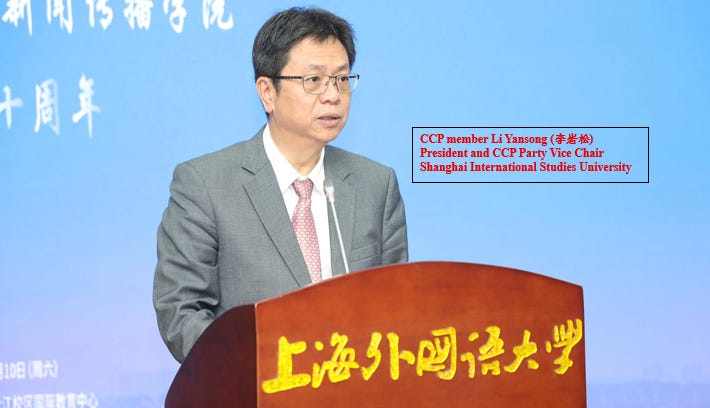


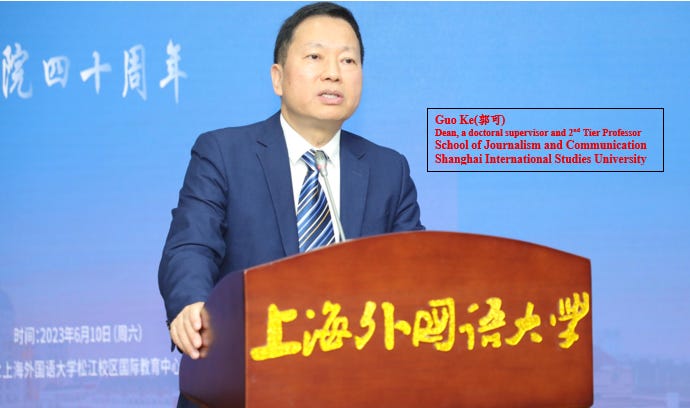
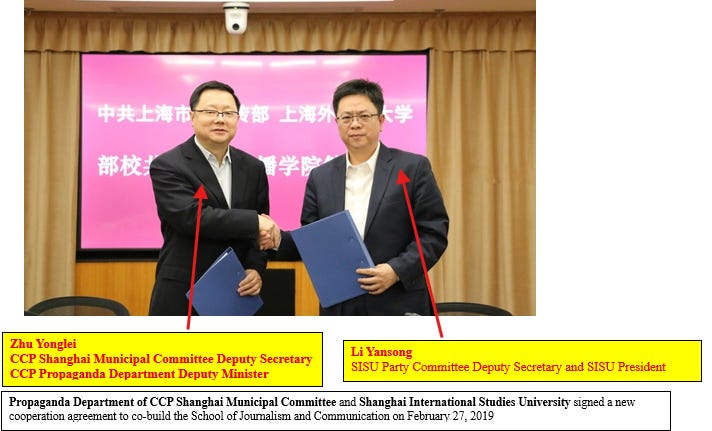
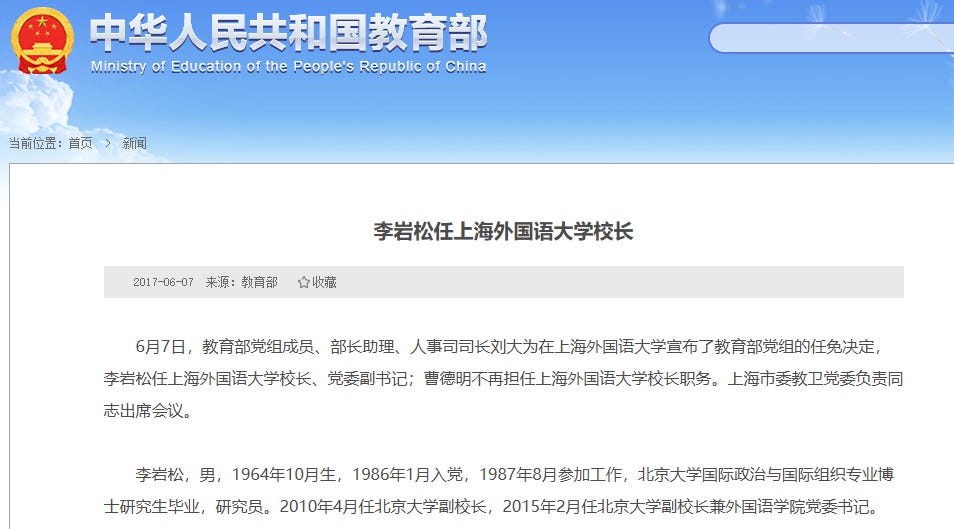

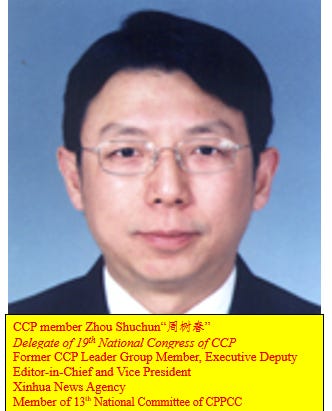
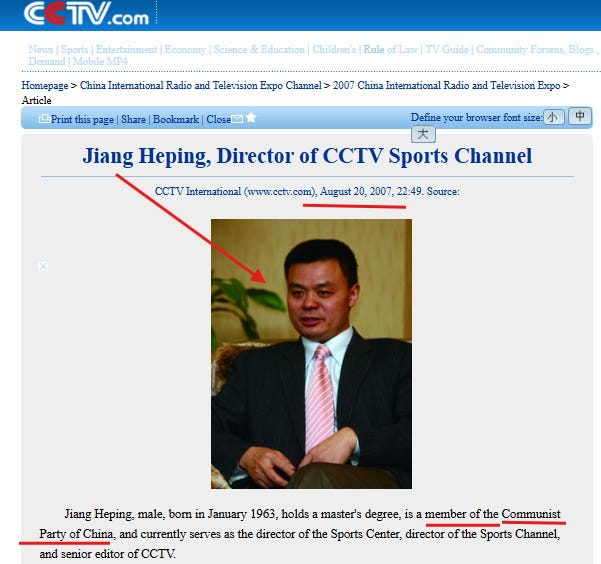
No comments:
Post a Comment